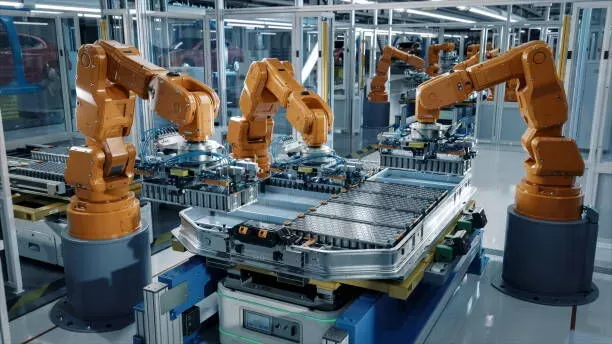Notifications

7 minutes, 16 seconds
-43 Views 0 Comments 0 Likes 0 Reviews

Electric vehicles (EVs) and China EV chargers are transforming the automotive industry, ushering in a new era of sustainable transportation. At the heart of every EV lies its battery—a crucial component that determines performance, efficiency, and range. Understanding the types, functions, construction, and lifespan of EV batteries is essential for anyone interested in the future of mobility. This article explores the main types of electric car batteries, how they work, how they’re built, and what affects their longevity.
Lithium-ion (Li-ion) batteries are the most widely used batteries in modern electric vehicles. Their popularity stems from their high energy density, lightweight nature, and quick recharge capability. Comprising lithium, cobalt, and other elements, these batteries efficiently store and release energy. They also have a low self-discharge rate, retaining power for extended periods when not in use. However, they require sophisticated battery management systems (BMS) to ensure safety and prevent overheating.
Once a standard in hybrid vehicles, nickel-metal hydride (NiMH) batteries still appear in some EVs. Although they offer lower energy density than lithium-ion alternatives, they have longer cycle life and perform reliably across a wide range of temperatures. While they are being gradually replaced by newer technologies, NiMH batteries remain viable in certain applications.
Lead-acid batteries are among the oldest rechargeable battery types and are primarily used in conventional vehicles for starting, lighting, and ignition (SLI). In EVs, they’re mostly limited to low-speed electric vehicles (LSEVs) and older hybrid models. While inexpensive, they are heavy and offer low energy density, limiting their usefulness in modern electric cars.
Ultracapacitors, or supercapacitors, are not conventional batteries but energy storage devices capable of rapid charge and discharge. Often used to support traditional batteries, they provide quick bursts of power for acceleration or regenerative braking. Although their energy storage capacity is limited, their longevity and power-handling capabilities make them suitable for specialized functions.
Solid-state batteries represent the future of battery technology. Replacing liquid electrolytes with solid ones improves safety and increases energy density. These batteries are less likely to overheat or catch fire and could eventually offer longer driving ranges and faster charging times. Although still under development, solid-state batteries are poised to revolutionize the EV landscape.
EV batteries function based on electrochemical principles. They store electrical energy as chemical energy, which is then converted back to electricity to power the vehicle’s motor. During charging, electricity triggers chemical reactions that store energy in the battery. When driving, this stored energy is released, powering the electric motor.
A Battery Management System (BMS) oversees this process. It monitors key parameters such as the State of Charge (SoC), State of Health (SoH), and temperature, ensuring the battery operates safely and efficiently. The BMS is critical in maximizing performance, safety, and battery longevity.
Unlike household batteries, EV batteries are complex assemblies made up of multiple cells, grouped into modules, and further integrated into battery packs. This modular structure allows manufacturers to scale battery capacity according to the vehicle’s performance requirements.
Each battery cell includes:
Anode (usually graphite): Stores lithium ions during charging.
Cathode (typically made of lithium-metal oxides): Releases lithium ions during charging.
Electrolyte: Enables ion flow between anode and cathode.
The efficiency, safety, and lifespan of an EV battery are directly influenced by the design and materials used in these components.
Battery degradation is a gradual chemical process that reduces a battery’s ability to hold a full charge over time. With each charge and discharge cycle, the battery’s capacity slightly diminishes. While new batteries start at 100% SoH, after a decade of typical use, SoH might drop to around 85%.
This degradation mainly affects the driving range, not the vehicle’s power or performance. Most EV manufacturers offer warranties covering battery health for 8 years or more, giving consumers peace of mind. Moreover, continuous advancements in battery chemistry and BMS design are helping slow degradation, ensuring longer-lasting performance.
The lifespan of an EV battery depends on several factors, including battery chemistry, usage patterns, environmental conditions, and charging behavior. Most lithium-ion batteries last 8 to 15 years, with warranties often covering at least 8 years or 100,000 miles.
Charging Habits: Frequent fast charging can accelerate wear. Slower, level-2 charging is recommended for daily use.
Temperature: Extreme cold or heat can degrade battery health. Keeping the vehicle in moderate conditions is beneficial.
Depth of Discharge: Avoiding deep discharges (below 20%) and overcharging (above 80%) can help preserve battery life.
As electric vehicles become more mainstream, understanding the batteries that power them is crucial. From the current dominance of lithium-ion technology to the emerging potential of solid-state batteries, these energy storage systems play a pivotal role in the EV revolution. Learning about battery types, construction, operation, and degradation empowers consumers to make informed choices and confidently embrace electric mobility. With continued innovation, EV batteries will only become more efficient, durable, and environmentally friendly—driving us toward a cleaner, more sustainable future.Know more about Google SEO Directory
China EV Chargers EV Charger Manufacturer EV Charging Solutions

